Full circle: driving Mazda’s rotary-engined sports cars
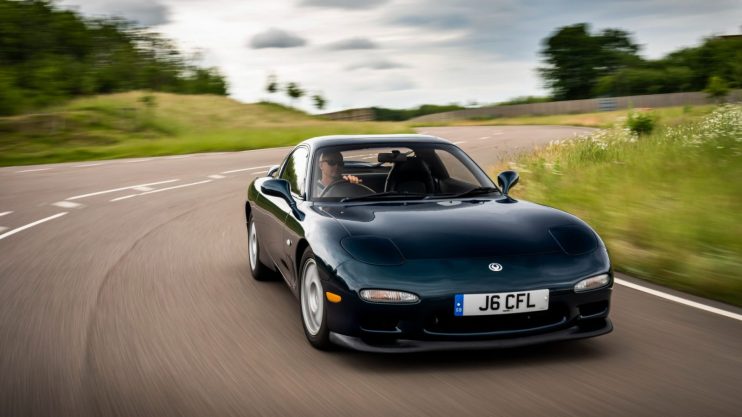
Thirty years ago, after 362 laps, 28 pit stops and 24 gruelling hours, a Mazda 787B crossed the line to triumph at Le Mans. This was the first time a Japanese marque had won the iconic endurance race – and the only Le Mans victory with a rotary engine.
Reclined on a deck chair at an open-air cinema, I’m here to mark that anniversary, first by watching the highlights of the 1991 race, then by driving some of Mazda UK’s superb heritage fleet. The cars parked outside include all four generations of MX-5 and a rare V6-engined MX-3, but I’ll be focusing on the rotary stuff. From a classic Cosmo to a modern RX-8, there is no shortage of options.
Back to Le Mans, though, where Mazda drivers Johnny Herbert, Volker Weidler and Bertrand Gachot are working their way through the field, having started 23rd on the grid. The orange and green 787B isn’t the fastest car on the 8.5-mile circuit, but its 700hp four-rotor R26B engine is efficient and reliable. It also sounds utterly ear-splitting, even when heard through speakers in a sheep field.
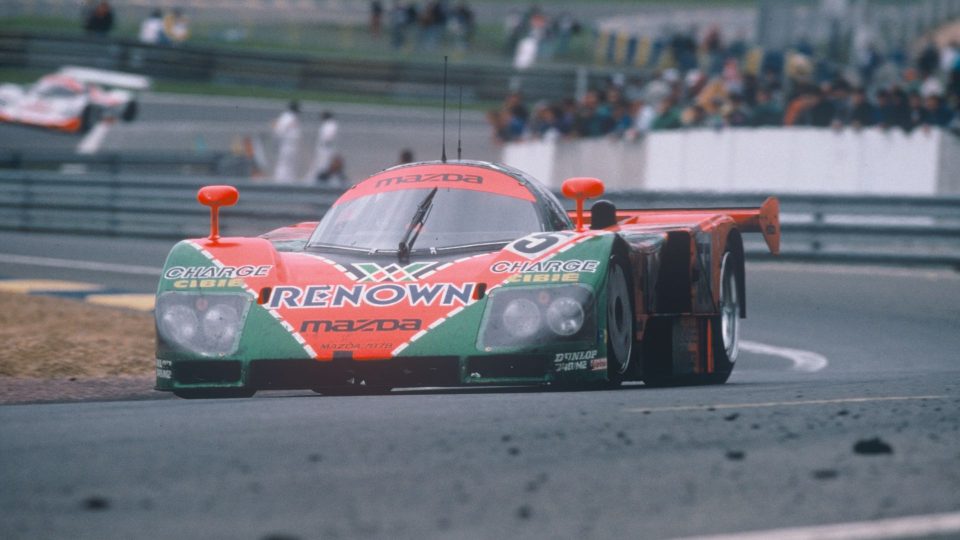
By the half-way point at 4am, the Mazda has edged up to third place. Then, with three hours to go, we’re on the edge of our deck chairs as the leading Mercedes-Benz retires with engine trouble, leaving the 787B to cruise home. At 4pm, Johnny Herbert passes the chequered flag and thousands of fans invade the track. Maybe it’s the popcorn, or maybe I have a large lump in my throat.
That winning car now lives out its retirement at the Mazda Museum in Hiroshima. It showed the world what rotary engines could achieve on the racetrack, yet Mazda had already proven their potential on the road. The story starts in 1967…
Mazda Cosmo
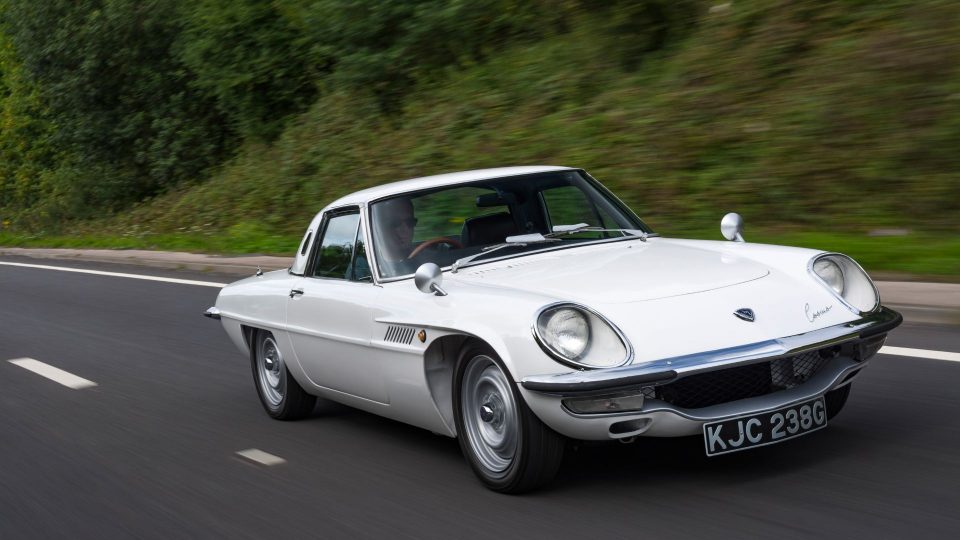
The Cosmo owes its name to the space race, and its sleek lines are straight out of The Jetsons. Spot the capsule-style cockpit and tail lights like rocket afterburners. While rivals such as the Jaguar E-Type and Porsche 911 looked to the past, the Cosmo was inspired by a brave new world. Five decades on, it still looks fabulous: impossibly tiny and achingly pretty.
As the first Mazda to employ a rotary engine, the Cosmo was futuristic under the skin, too. The twin-rotor unit displaces just 982cc, but with only 940kg to shift – 200kg less than a new Ford Fiesta – it reaches 62mph in less than 10 seconds.

This 1969 Series II is the rightful flagship of Mazda’s heritage fleet. Clamber inside and its houndstooth trim, and wood-rimmed wheel ooze Sixties style. It’s not as cramped as you might think, but you sit very low: at eye-level with the oversized alloys of modern SUVs. The steering is lively and the gearshift pleasingly slick, while the 10A engine spins up keenly. It whirrs and hums with a palpable lack of inertia, sounding and feeling quite unlike anything else.
On more challenging roads, the Cosmo doesn’t feel as sporty as its styling suggests. Its chassis shudders and shakes over potholes, while its brakes are more iron age than space age. Nonetheless, it’s a bracingly analogue experience and there’s a rare joy in piloting something so traffic-stoppingly beautiful.
Mazda RX-3
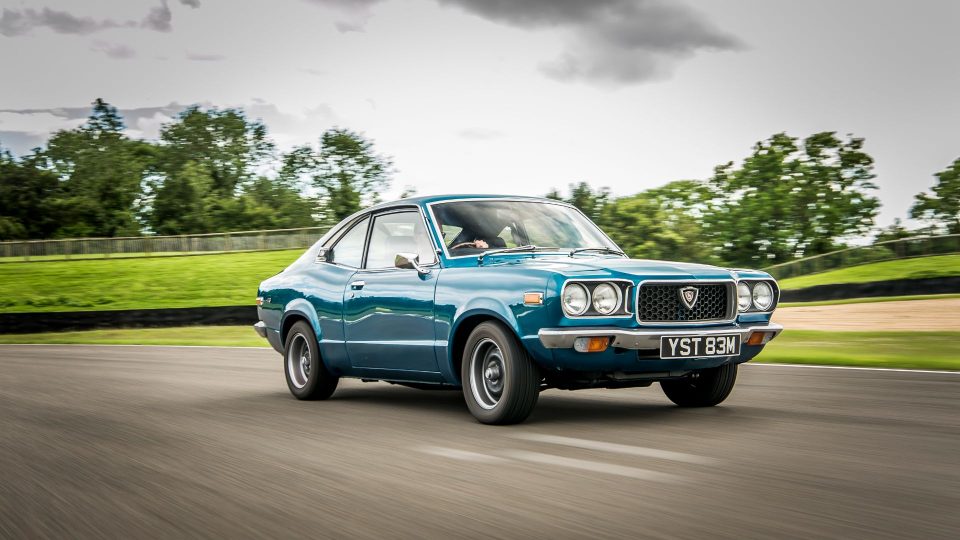
The 1973 RX-3 could hardly be more different. Squat and square-jawed, it looks like a shrunken muscle car and sounds like a wasp trapped in a megaphone. “You can thank the straight-through exhaust for that,” jokes an engineer from Jota Sport, the Kent-based race team that maintains Mazda’s heritage cars.
Called the Mazda Savanna in Japan, the RX-3 was sold in saloon and estate body styles, alongside the four-seat coupe seen here. Its interior is wall-to-wall black vinyl, with deep-set dials and a push-button AM radio. The unassisted steering works your biceps, the gearshift is notchy and mechanical, and the brakes demand a hefty shove. You can’t drive on auto-pilot; this car demands your attention.

Unlike the other Mazdas here, the RX-3 isn’t showroom-spec; its 110hp 1.2-litre motor and five-speed gearbox have been transplanted from a Mk1 RX-7. Aided by a kerb weight of 884kg, it blares to 62mph in 10.8 seconds and 115mph flat-out. Trust me, it feels faster.
For all its pop-and-bang fireworks, though, the Mazda is also free-revving and turbine-smooth. That eccentric engine, with its triangular rotor instead of reciprocating pistons, endows the car with a unique, somewhat contrary character. Journalists can be a cynical bunch, but nobody stepped out of this one without a smile.
Mazda RX-7 Mk1
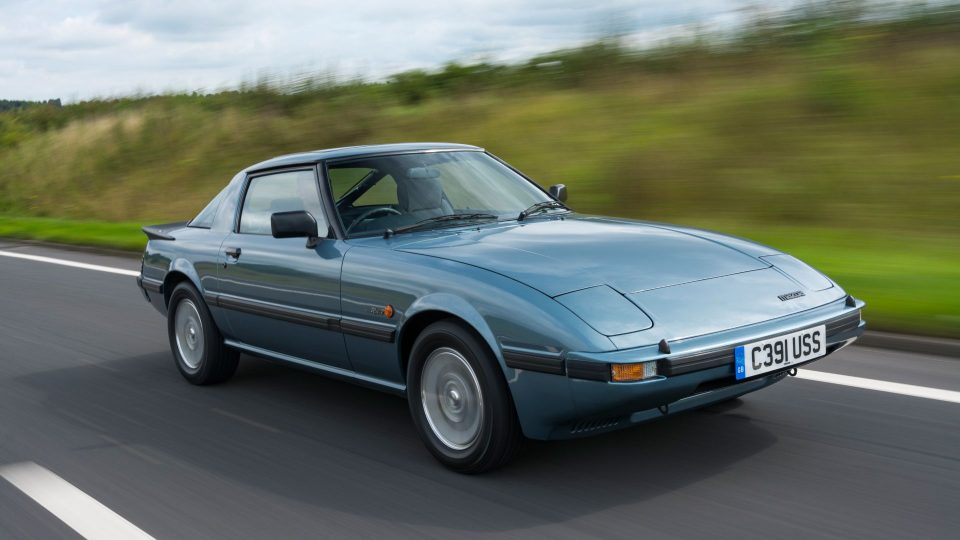
Plenty of old cars are described as ‘barn finds’ when they’re nothing of the sort. This 1984 RX-7 is the real deal. Placed into storage by a Scottish Mazda dealer after he lost the franchise, it surfaced 33 years later – still unregistered – with a mere 49 miles on the clock.
Thankfully, rather than preserve it as a museum piece, Mazda changed the oil and coolant, fitted new tyres and brake pads, then added the RX-7 to its classic fleet. That was four years ago, and the odometer has crept up to 856 miles since. Even so, the carpets and plush velour seats still look factory-fresh. I almost feel guilty for driving it.
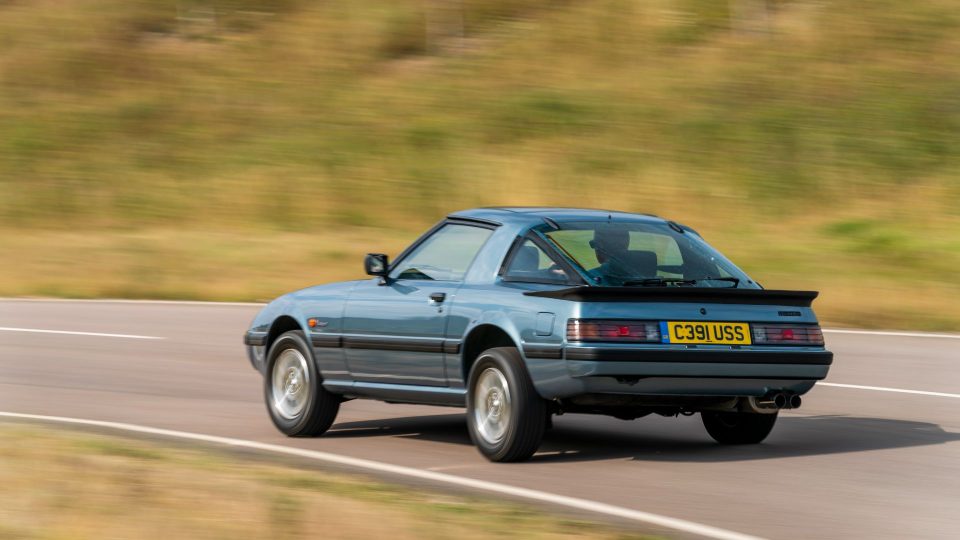
After the raucous RX-3, this Mazda seems surprisingly chilled out. Its steering is light and rather vague around the straight-ahead, while the 115hp 1.2-litre twin-rotor engine rarely raises its voice. Initial acquaintance suggests an easygoing GT, rather than a grab-it-by-the-scruff sports car. Zero to 62mph takes 8.4 seconds, with a top speed of 125mph.
Only when you push a bit harder does the RX-7 experience start to gel. Its pliant, unflustered ride is well suited to British B-roads and its manual ’box is slick and tactile – a Mazda trait that endures to this day. It also has pop-headlights, which make any car at least 20 percent cooler. Fact.
Mazda RX-7 Mk3
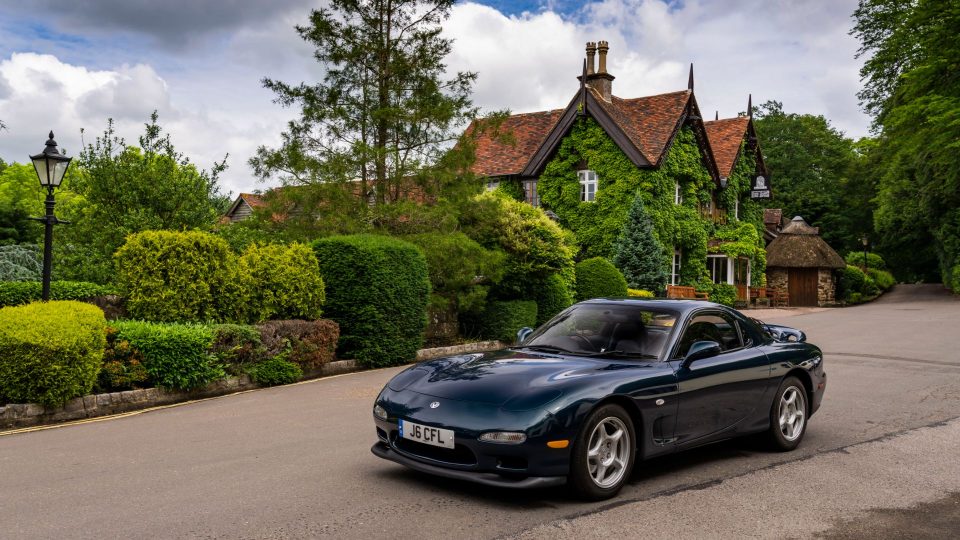
Most beautiful Japanese car ever? For our yen, the third-generation RX-7 faces a straight fight with the Toyota 2000GT. However, while a perfect 2000GT could set you back £1 million, decent RX-7s hover at around £30,000. Tempted? You should be.
Before you click on the classifieds, though, it’s worth noting that the ‘FD’ RX-7 has a fiendishly complicated engine – rotary, of course – that requires plenty of TLC. It featured the world’s first sequential twin turbochargers, with the second blower only joining the party from 4,000rpm. Mazda quoted 237hp at 6,500rpm: good for 0-62mph in 5.1 seconds and 156mph.
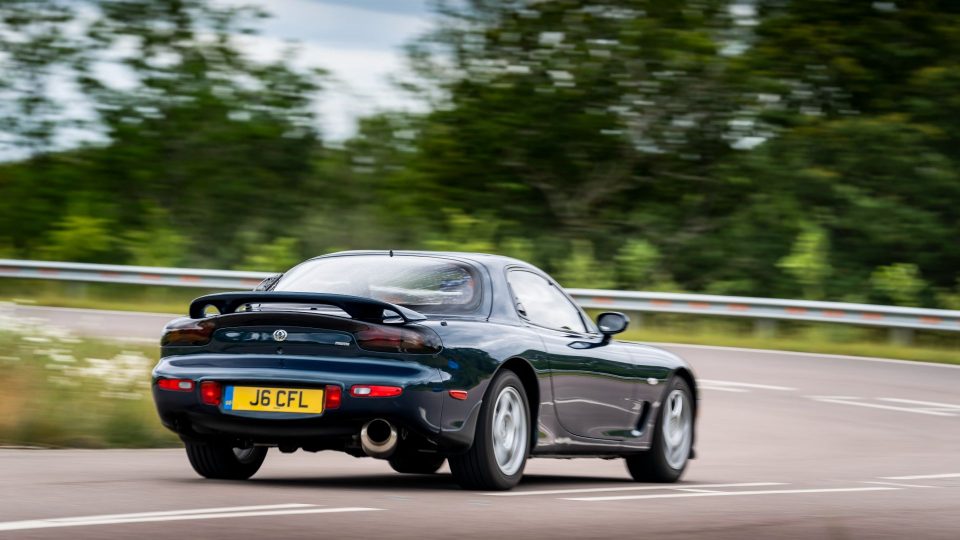
This 1993 RX-7 is one of just 210 cars officially imported to the UK. Standard apart from a massive tailpipe, it has covered less than 25,000 miles from new. Its snug cabin is as curvy as its bodywork, although there’s an abundance of black plastic and an ugly airbagged wheel. The twin-rotor 13B engine churns and then barks into life. Yep, that exhaust is LOUD.
Spoiler alert: we still have one car to go, but this is the Mazda I’d gladly take home. Deft and beautifully balanced, it feels like a proper driver’s car. The steering jostles with feedback, the brakes are progressive and the Torsen differential offers slingshot traction. Here, the rotary engine is a supporting act, not the star of the show.
Mazda RX-8
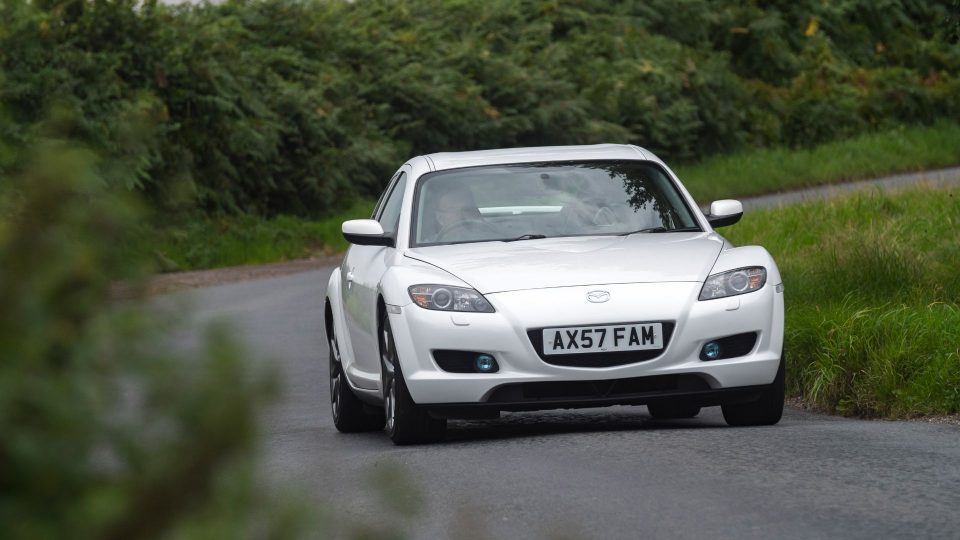
We conclude with the RX-8. In this company, it looks a tad conventional, but let’s not forget this is a rotary-engined coupe with a manual gearbox and rear-hinged ‘freestyle’ doors. The RX had evolved into something softer and more family-friendly, but Mazda was hardly painting by numbers.
Like its predecessor, the RX-8 has a reputation for mechanical melodrama, although plenty of specialists claim they can make it reliable. Its non-turbocharged 1.3-litre ‘Renesis’ engine drives the rear wheels and produces 231hp at a heady 8,200rpm. Today, its performance is on par with a middling hot hatchback: 0-62mph in 6.4 seconds and 146mph.
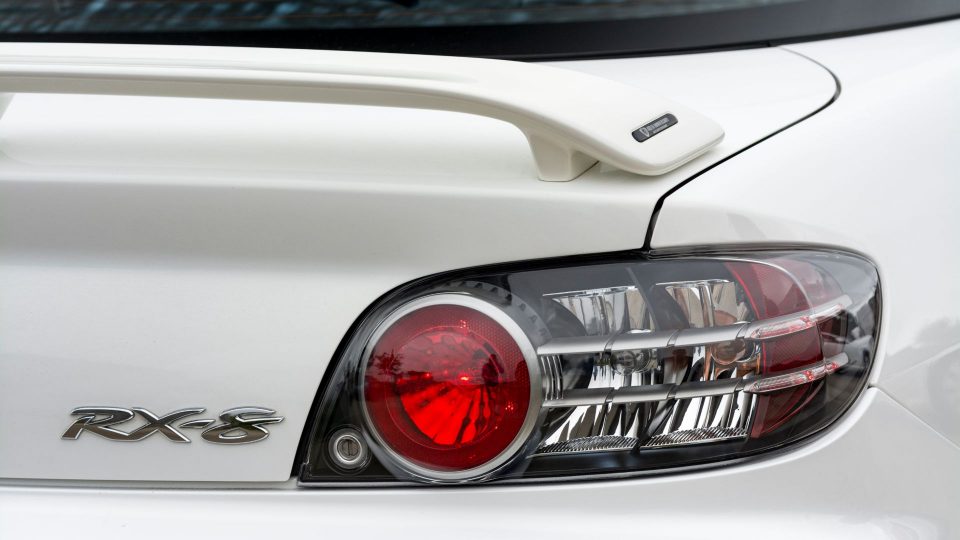
The Crystal White RX-8 in Mazda’s heritage collection is a 40th Anniversary Limited Edition, one of 400 cars to mark 40 years since the Cosmo was launched. Special touches include 18-inch grey alloy wheels, black leather trim and an ‘aerodynamically proven’ rear wing. As with all cars from this era (2003-2012), the LCD displays and technology have dated, but the four-seat interior is stylish and very comfortable.
Assuming you could live with its 25.2mpg thirst, this is certainly a car you could daily-drive. It has a calm, long-legged feel not unlike the original RX-7, with a whirring, twin-rotor engine, well-weighted controls and a comfortable ride. This was the end of the line for the Mazda rotary engine, but it will soon make a comeback – complete with hybrid assistance – in the new MX-30 crossover. The story isn’t over yet.
Tim Pitt writes for Motoring Research